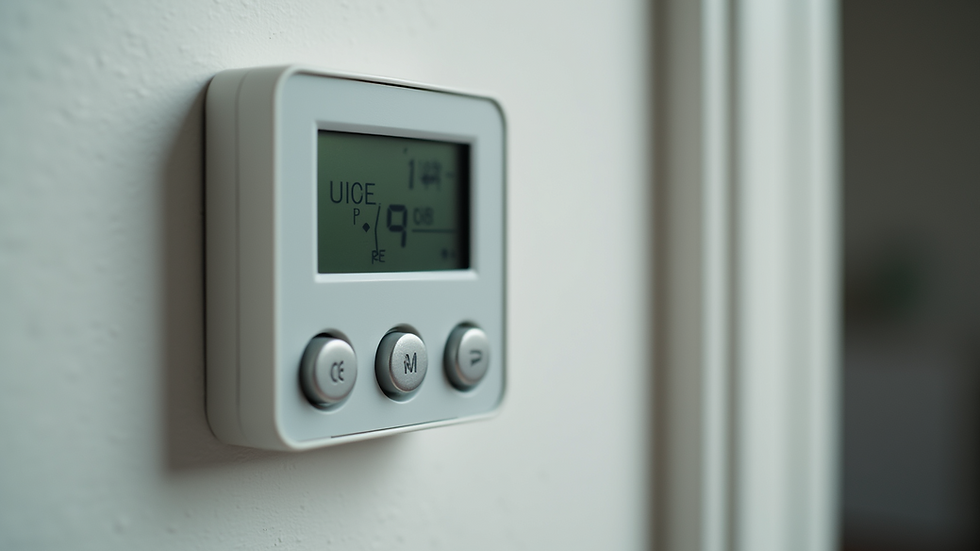Essential Steps for Preparing Your Property for an EPC Assessment
- Matthew Isaac
- Jun 30
- 3 min read
Getting ready for an Energy Performance Certificate (EPC) assessment is essential for homeowners and landlords eager to boost their property’s energy efficiency. An EPC provides critical insights into energy use and carbon emissions while suggesting ways to enhance efficiency. This guide will explore key steps to take prior to your EPC assessment, helping you achieve the best possible energy rating.
Understand the Importance of EPC Assessments
EPC assessments inform homeowners about energy efficiency. Properties are rated on a scale from A (most efficient) to G (least efficient). Notably, homes rated A can save up to 60% on energy bills compared to those rated G. Additionally, a higher EPC rating can increase your property’s market value by up to 14%! This makes preparing for the assessment a smart financial move. Knowing what assessors look for can significantly affect your final rating.
Check Lighting Fixtures
One of the simplest ways to enhance your property's energy efficiency is to ensure all light fittings are LED.
Switching to LED lights can cut electricity use by about 75% compared to traditional incandescent bulbs, and they last 15 times longer.
Before the assessment, inspect each room to confirm that all fixtures have LED bulbs, including outside lights and decorative lamps.
Image: Lighting Fixtures

Inspect Loft Insulation
Proper loft insulation is crucial for reducing heat loss.
Check that your insulation is at least 270mm thick, which is the current recommendation.
Assessors will look for well-distributed insulation without gaps.
If you discover that your insulation is lacking or compressed, adding more can not only keep your home warmer but could also improve your energy rating by up to 10%.
Visibility of Heating Controls
Ensure that heating controls like programmers and room thermostats are clearly visible during the assessment.
These controls should be easily accessible, and functioning properly is vital.
Consider positioning the controls where they can be quickly operated by the assessor.
Image: Heating Programmer & Thermostat

Gather Documentation for Insulation and Glazing
Collect any paperwork related to your insulation and glazing improvements.
If you've installed cavity wall insulation, make sure to have the installation certificate on hand for the assessor.
For double or triple-glazed windows, have the corresponding documents ready as well.
This documentation provides clarity about your property’s energy efficiency, which can considerably influence the EPC rating.
Evidence of Extensions
If your property has any extensions, it’s helpful to provide proof of when they were constructed.
This helps assessors determine whether the extension adheres to modern energy efficiency standards.
Planning permissions or building regulations approval are key documents to gather.
Having this paperwork can streamline the assessment process and might positively affect your rating if the extension follows energy-efficient building practices.
Clean and Organize the Property
Before the EPC assessor arrives, take the time to clean and organise your property.
Make sure all rooms are accessible for the assessor to examine energy related features such as windows, radiators, and heating systems.
Clearing clutter, especially around insulation areas and heating controls, ensures a smooth assessment process.
Conduct a Pre-Assessment
Consider doing a pre-assessment of your property before the official EPC assessment.
This could involve checking that all items mentioned are in order: LED lights installed, adequate insulation, visible heating controls, and prepared documentation.
Final Thoughts
Preparing your property for an EPC assessment can be straightforward and beneficial. By following these essential steps, you can ensure your property is ready for evaluation while working to improve its energy rating. Remember that LED lights, sufficient loft insulation, visible heating controls, and organized paperwork matter greatly. Taking these steps leads to better energy efficiency and a deeper understanding of your property’s energy use and carbon footprint.
With these preparations, you are setting yourself up for a favorable EPC rating and contributing to a more energy-efficient future.




Comments